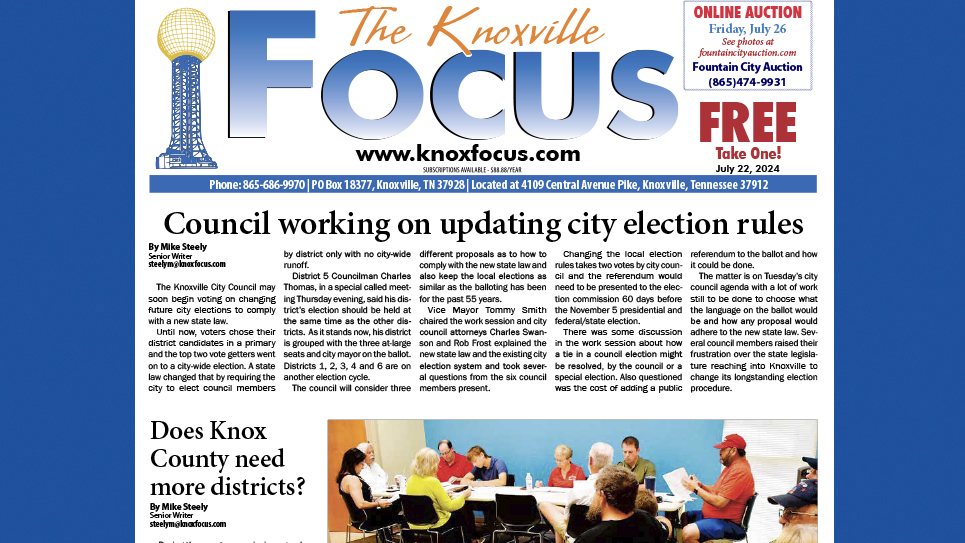Yesterday, while I was sitting in a Greyhound bus terminal I had the opportunity to listen in on a White House conference call. Secretary of Housing and Urban Development Shaun Donovan and Secretary of Agriculture Tom Vilsack held an on-the-record conference call discussing the President’s Climate Action Plan and released new state data on climate change. Personally, I try to listen in on every conference call I can because I get to hear other reporters ask deep thought provoking questions. In addition to the conference call the White House also included the press release listed in this post. Since it deals directly with Tennessee, I have included it verbatim. The press conference call dealt more on a national level which is why I did not include any additional details.
Dan Andrews reporting…
THE WHITE HOUSE
Office of the Press Secretary
FOR IMMEDIATE RELEASE
June 26, 2013
Tennessee: The Threat of Carbon Pollution
WASHINGTON, DC – On Tuesday, the President delivered remarks at Georgetown University, laying out his vision for a comprehensive plan to reduce carbon pollution, prepare our country for the impacts of climate change, and lead global efforts to fight it. You can read the President’s planHERE and view today’s state reports on the impact of climate change HERE.
We have a moral obligation to leave our children a planet that’s not polluted or damaged, and by taking an all-of-the-above approach to develop homegrown energy and steady, responsible steps to cut carbon pollution, we can protect our kids’ health and begin to slow the effects of climate change so we leave a cleaner, more stable environment for future generations. Climate change impacts including severe weather, asthma attacks, and prolonged allergy seasons are affecting our security, our economy, and our communities. In 2012 alone, the cost of weather disasters exceeded $110 billion in the United States, and climate change will only increase the frequency and intensity of these events. Today, we already set limits for arsenic, mercury and lead, but we impose no limits on how much carbon pollution our power plants release. Carbon pollution is contributing to a higher risk of asthma attacks and more frequent and severe storms, floods, heat waves, and wildfires, driving up food prices and threatening our communities. The President’s plan is a comprehensive approach to cutting the pollution that causes climate change and threatens public health, setting us on a path to make our communities healthier, safer, and more resilient.
THE IMPACT OF POLLUTION AND EXTREME WEATHER IN TENNESSEE
In 2011, power plants and major industrial facilities in Tennessee emitted more than 55 million metric tons of carbon pollution—that’s equal to the yearly pollution from more than 11 million cars.
Recent incidents provide a reminder of the impacts to our public health and costs due to extreme weather in Tennessee. Although we cannot say that climate change is responsible for any individual event, climate change is already increasing our risks from these events.
Ø Over the past 10 years, weather and climate disasters have cost Tennessee more than 20 billion dollars.
Ø In Tennessee, there were close to 6,700 hospital admissions for asthma in 2011, with an average charge of almost $17,500 for each stay.
Ø The US Department of Agriculture designated 14 counties in 2011 and 42 counties in 2012 as primary natural disaster areas due to losses caused by drought and excessive heat during those summers.
Ø Flooding during 2010 resulted in a major disaster declaration and required over $4.2 million in federal assistance for recovery efforts.
ANTICIPATED CLIMATE-RELATED RISKS IN THE SOUTHEAST
Sea level rise, dangerous storm surges and intense hurricanes already pose serious threats to coastal cities in the Southeast, and climate change will intensify these impacts. The Southeast experienced two billion-dollar extreme weather events in 2012. Decreased water availability is very likely to affect the region’s economy as well as its natural systems. By the end of this century, much of the Southeast will experience more than 100 days above 90°F, which in the absence of adaptive actions is expected to lead to more heat-stress related illness and deaths, decreased agricultural production, and negative impacts on fish and wildlife. Warmer temperatures accelerate formation of smog in urban areas, exacerbating respiratory problems such as asthma.
CUTTING CARBON POLLUTION AND INCREASING RESILIENCE IN TENNESSEE
Climate change is a long-term problem, but we can make substantial progress through a series of steady and responsible steps. The President’s plan builds from progress already underway to work with states, local communities, and the private sector to reduce carbon pollution and to prepare our Nation for the impacts that cannot be avoided. Since 2009, President Obama has taken a number of common sense measures to combat carbon pollution, including:
Ø Investing in Clean Energy: During the President’s first term, the United States more than doubled its use of renewable energy from wind, solar, and geothermal sources. In Tennessee, renewable energy generation from these sources increased more than 40 percent. Since 2009, the Administration has supported tens of thousands of renewable energy projects throughout the country, including more than 300 in Tennessee, generating enough energy to power more than 11,000 homes.
Ø Improving Efficiency: Using less energy to power our homes, businesses and vehicles is critical to building a clean and secure energy future. President Obama has made essential investments in research and development for energy efficiency advances, and set new standards to make the things we use every day – from cars to microwaves – more efficient.
- · President Obama established the toughest fuel economy standards for passenger vehicles in U.S. history. These standards will double the fuel efficiency of our cars and trucks by 2025, saving the average driver more than $8,000 over the lifetime of a 2025 vehicle and cutting carbon pollution.
- · Since October 2009, the Department of Energy and the Department of Housing and Urban Development have jointly completed energy upgrades in more than one million homes across the country, saving many families more than $400 on their heating and cooling bills in the first year alone.
- · As part of the President’s Better Buildings Challenge, the city of Knoxville committed to reducing energy intensity 20 percent by 2020 in 2.06 million square feet of its buildings.
Ø Preparing Communities for the Consequences of Climate Change: The Obama Administration has worked since its earliest days to strengthen the Nation’s resilience to climate change impacts, including investing in critical science and tools, developing the first-ever Federal agency climate adaptation plans, and directly partnering with communities.
###
—–






